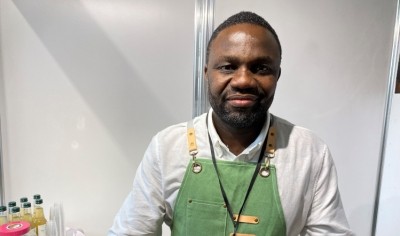Rethinking UK game at Holme Farmed Venison

“In the past, venison would be hung for a long time, allowed to get quite gamey and lose its colour to go from red to quite a dark colour and in many ways that had been putting people off the product,” he explained.
“With our farmed product we were able to apply red meat controls and bring on to the market a less gamey product based on good health and not too strong a flavour. It’s that that won the market opportunity for it.
“To do that it meant hanging the carcases for no more than two-three days at the most before they started to change colour, but also to make sure we didn’t lose the moisture in the carcase.”
The wider appeal of its venison products saw a spike in demand for HFV, which lead the business to acquire all the deer it could get its hands on, even importing up to 50% of farmed deer from New Zealand to meet the market it had created.
Eating locally
“At the same time we were seeing a growth in the wild population in the UK and more people wanted to eat locally, more people want to use the local raw material, so that made fundamental changes,” said Sampson.
“At the same time the game meat operators were improving their operations, tidying up their act and getting BRC and SALSA approvals which made it easier for us to deal with them, but it was the fundamental changes in the game laws that made a big difference.”
Commenting on the affect Brexit had on his business, Sampson said it only moved the schedule in which the business was transitioning towards sourcing primarily from the UK.
“I think Brexit forced the decisions to be made quicker, because the pound devalued and suddenly some of the meat we had coming from abroad was too expensive,” he explained.
Rapid response
“So that made us start thinking what we could do about it. We responded quickly to that, but we had the transition in progress luckily before that started.”
Like many other food business, HFV received an unexpected boost from the COVID-19 pandemic, as consumers rushed out and emptied store shelves.
“The healthy element of COVID has been the mail order side and that was suddenly lifted up to Christmas levels,” Sampson continued.
“It hasn’t gone back to those levels, but we now have a healthy mail order side all the time, where people are ordering a whole range of specialist cuts they would normally be getting at a restaurant or that nature, or cuts that certainly wouldn’t be stocked at retail.
“It has opened up a huge market opportunity and people’s acceptance of home delivery, along with delivery companies that are far more efficient at getting it out. It’s a win, win all around.”
















